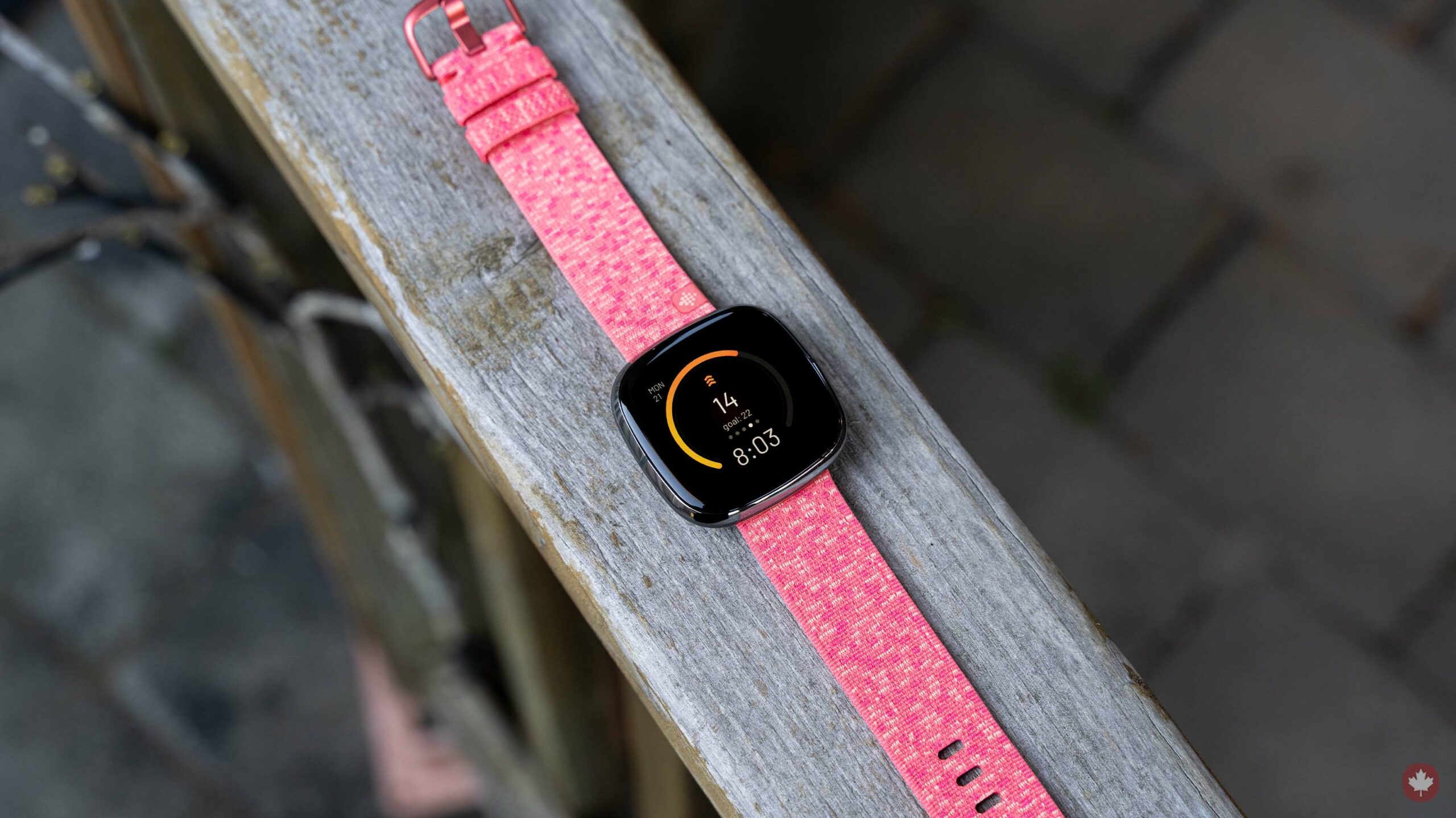
The Pros
- Great design
- Excellent health tracking features
- Solid display
The Cons
- Sometimes frustrating app
- Battery life could be better
- Charging cable is too short
Fitbit announced its new slate of smartwatches and fitness trackers back in August, including the exciting new high-end ‘Sense’ watch. I’ve had the opportunity to test out the Sense for about a week now and so far, it’s been a mostly impressive experience.
If the Sense looks familiar, that’s likely because the design isn’t significantly different from Fitbit’s existing Versa watch line. It features a more rounded look than the Versa 2 — which is still available on Fitbit’s website — and looks almost identical to the new Versa 3. The only real difference when it comes to hardware is that the Sense sports a stainless-steel ring around the edge while the Versa 3 is aluminum.
Although the Sense may look the same as its lower-cost brother, it does offer some extra functionality. Specifically, the Sense places the focus on mindfulness with a slew of features that ‘sense’ your stress. Those who opt for the top-tier Fitbit smartwatch will get access to new stress management tools, an electrodermal activity (EDA) scan app and a skin temperature sensor.
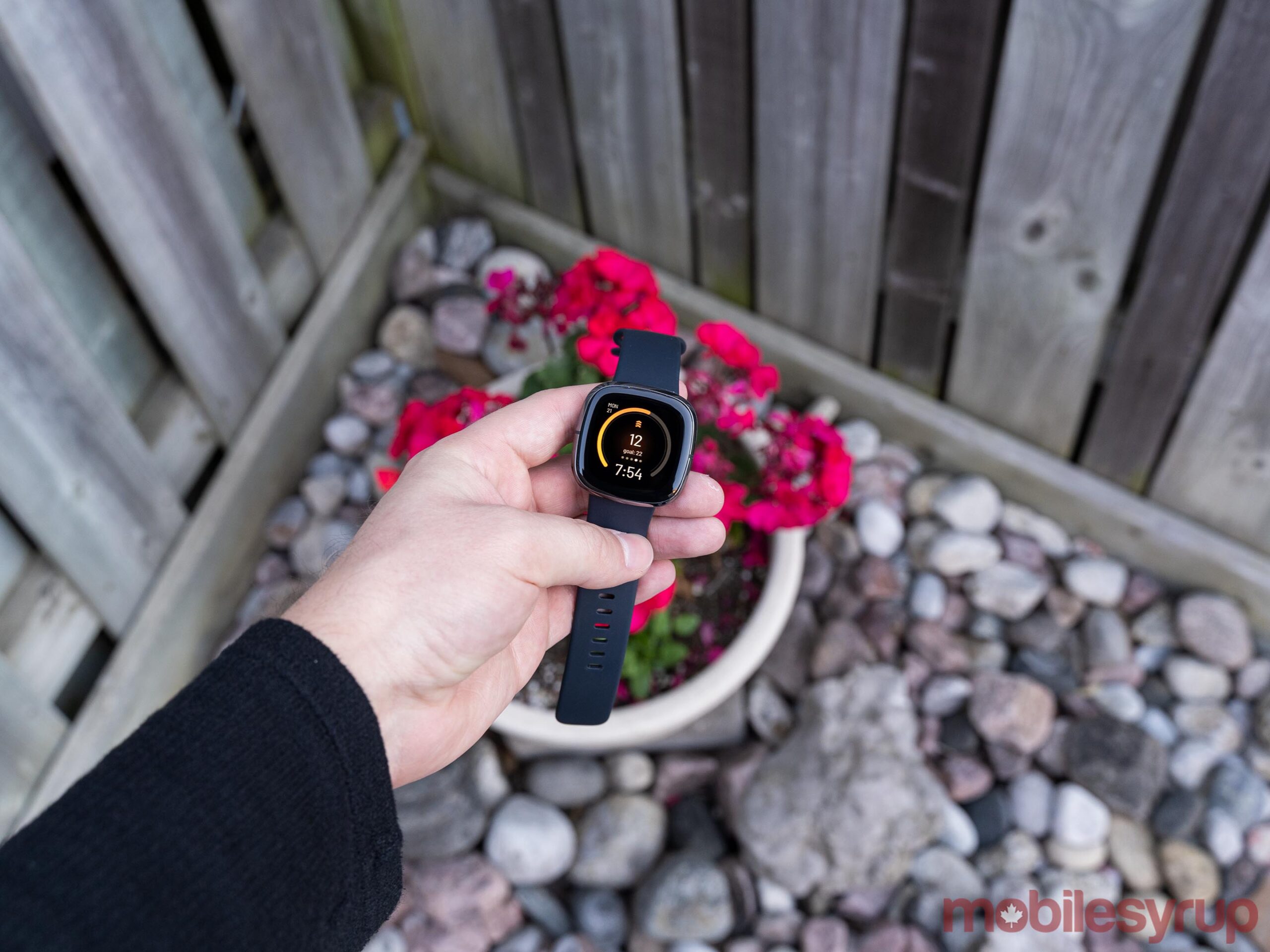
Sense also offers high and low heart rate notifications, and both the Sense and Versa 3 include built-in GPS while the older Versa 2 does not. Just about everything else is the same.
The Sense costs $429, coming in at $130 more than the Versa 3. The question remains if the extra mindfulness features warrant the added cost, especially when you consider the few other shortcomings of the Sense.
Fitbit is at the top of its hardware game
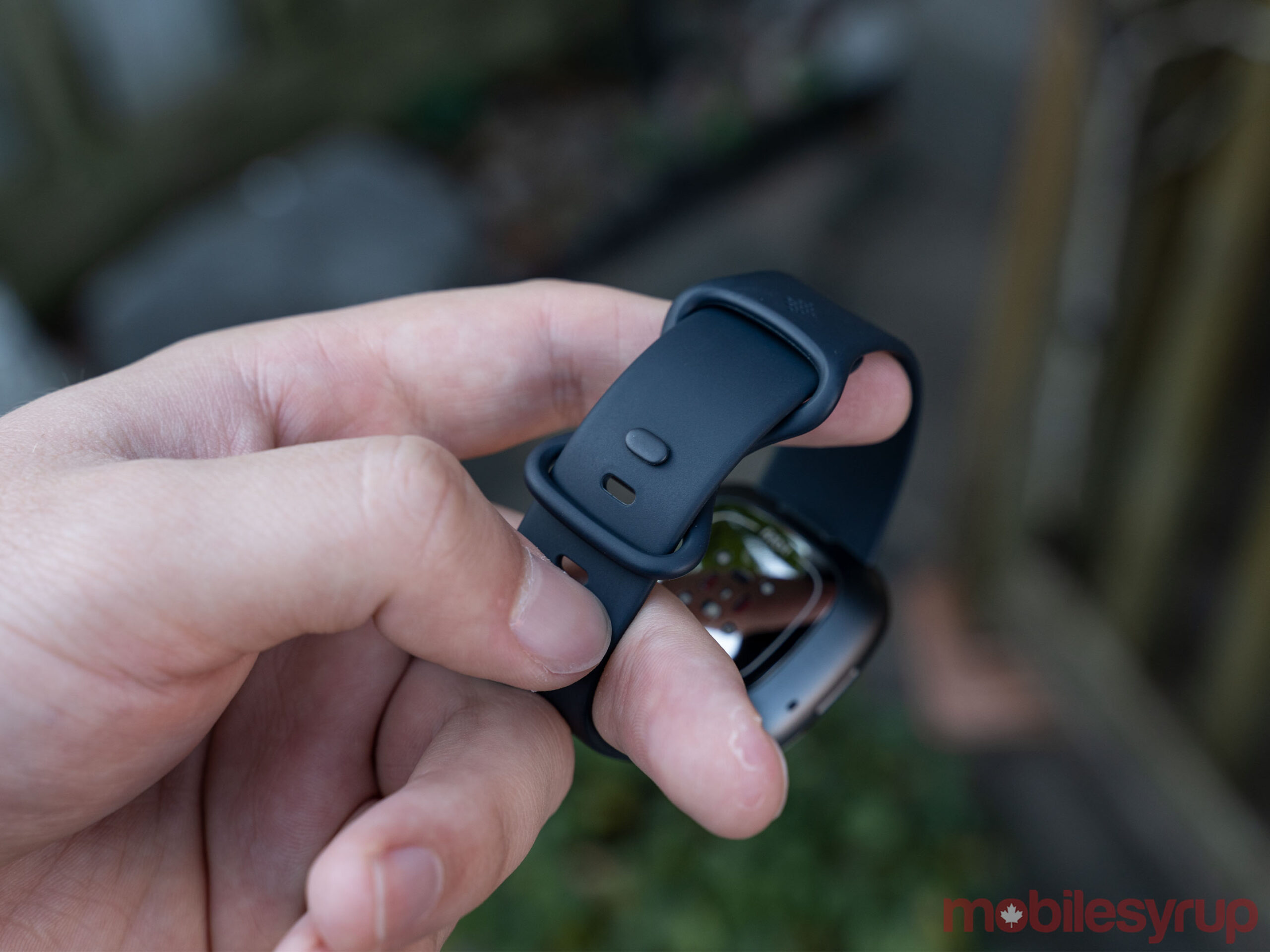
As far as I’m concerned, the Sense is one of the best-looking smartwatches on the market. The Apple Watch is also up there, and I’m a big fan of Withing’s fitness trackers (but they don’t count as smartwatches). Samsung’s Galaxy Watch Active 2 also looks nice, but pretty much everything else I’ve seen is a bulky, ugly mess I don’t want on my wrist.
Sense comes in two colours, ‘Carbon/Graphite’ or ‘Lunar White/Soft Gold.’ I got to try the Carbon/Graphite model, but of the two, I think the Gold looks better. Both come with a soft rubber wrist band that fits the colour.
The band that came with the Fitbit Sense was comfortable and more than fine for me. It’s changed up from past Fitbit bands I’ve tried, such as the harder, less comfortable rubber available on the Charge 4. The clasp was my only real gripe with the band because the way it tucks under itself can be annoying, but overall, it’s fine.
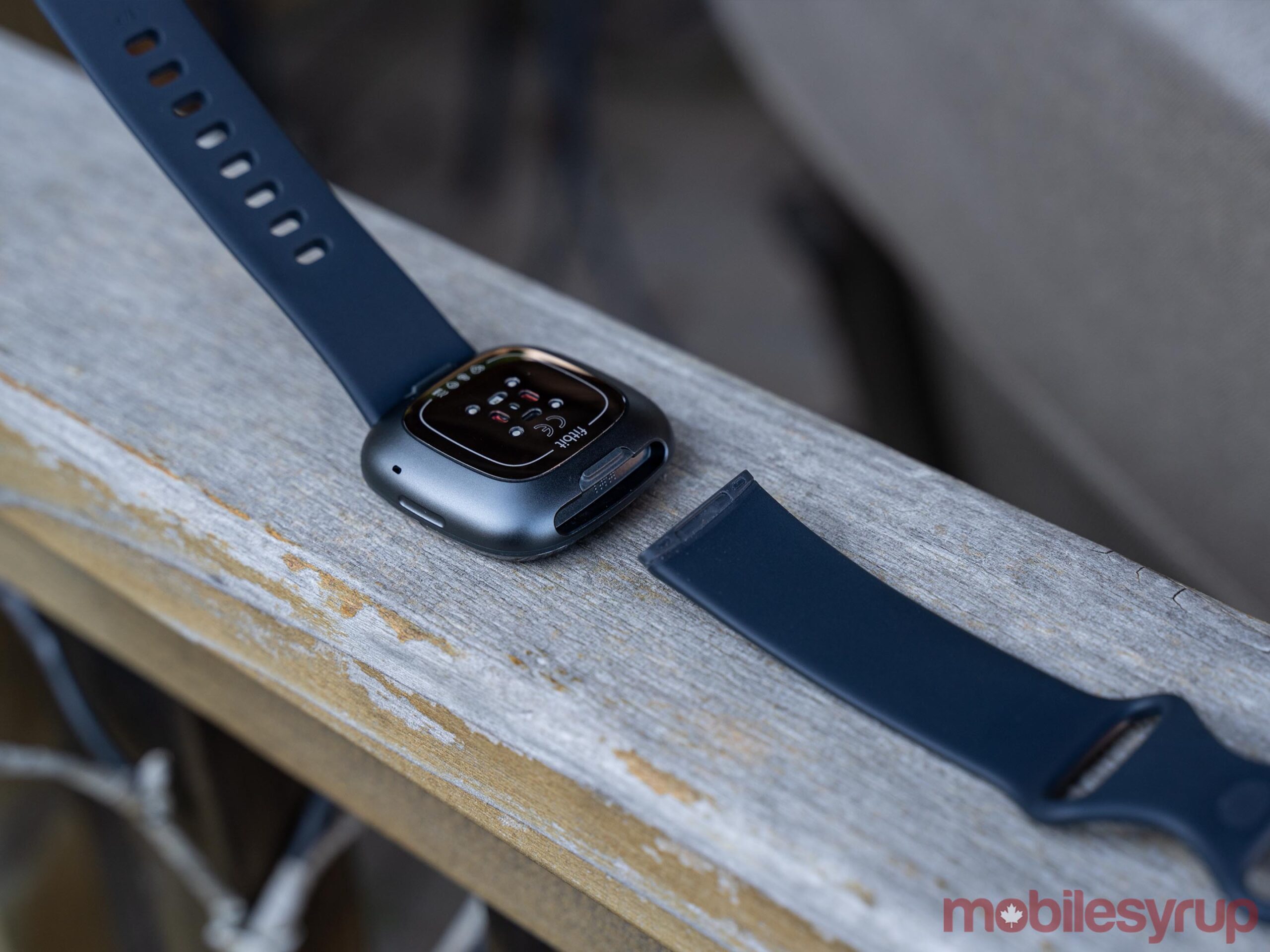
Fitbit sent one of its ‘Woven Bands’ for me to try as well. I found it to be much more comfortable than past versions of the Woven Band, which were scratchy and rough. As much as I enjoyed it — especially in the nice ‘Coral’ colour — I tended not to use it because it was too big (although that’s no fault of Fitbit — it’s because of my tiny wrists).
Thanks to the new clasp mechanism, changing out the bands is effortless. Watch straps lock into the side of the Sense and users can release it by pressing a small tab on the underside of the watch. However, the mechanism doesn’t seem particularly secure. The bands appear to lock in well and there’s no slop or wiggle once connected. Ultimately, I don’t think there’s anything wrong here, but the mechanism could be a probable point of failure with enough use.
Display looks great, even outdoors

The Sense boasts an excellent display with always-on capabilities, although perhaps not the best available. Still, I found it incredibly readable and, with the right clock faces, quite pleasing to the eye. The screen is actually kind of misleading in terms of size — it looks much bigger than it actually is thanks to the bezels, which blend in well with the display. At times, it almost looks like the whole screen over the edges.
Some may find the display to be too small to make much use of apps, and while I tend to agree, I’m not sure you can get a display big enough to use apps that would comfortably fit on anyone’s wrist.
The more important metric with a watch screen is readability. In my testing, the Sense could get plenty bright and remained fairly readable even outdoors. As with any screen, direct sunlight is a challenge, but the Sense handled that well.
On the flip side, the watch can also get rather dim, which is great at night. I’ve had issues with Fitbit trackers being too bright and distracting at night, but that wasn’t the case here, especially if you use ‘Sleep Mode,’ which stops the Sense from turning on the display when you move your arm. I still wish Fitbit would let users schedule Sleep Mode to turn on automatically — for example, along with the Fitbit app’s ‘Bedtime’ reminder.
Battery life is fine, but could be better

One concern I had before using the Fitbit Sense was battery life given my experiences with past Fitbit Charge models. The Sense has a lot more going on to tax the battery, but thankfully with the right settings and usage, it did okay.
For most of my testing, I used the Sense without the always-on display feature. Instead, the screen would turn on when I lifted my wrist, tapped the display or pressed the side button. Fitbit boasts that the Sense can get over six days off a charge, but in my testing I only got about four days.
Further, after spending some additional time with the Fitbit Sense, it could consistently last four or five days on a charge without using the always-on display option. Ultimately, that last day depended on how diligent I was at using Fitbit’s sleep mode and how often I used other, more battery intensive features.
With the always-on display option enabled, I could reliably get over two days off a charge, but I often had to charge the Sense part way through the third day. All said, the battery life is acceptable but it certainly could be better. The main issue here is that if you want to use the sleep tracking features — arguably one of the main reasons to buy the Sense — then you can’t charge it at night. That means finding time to charge it throughout the day, something I found a little difficult given my routine. In my case, I preferred getting as many days of use out of the Sense as possible before needing to put in on the charger, but depending on your routine, charging the Sense every other morning could work well.
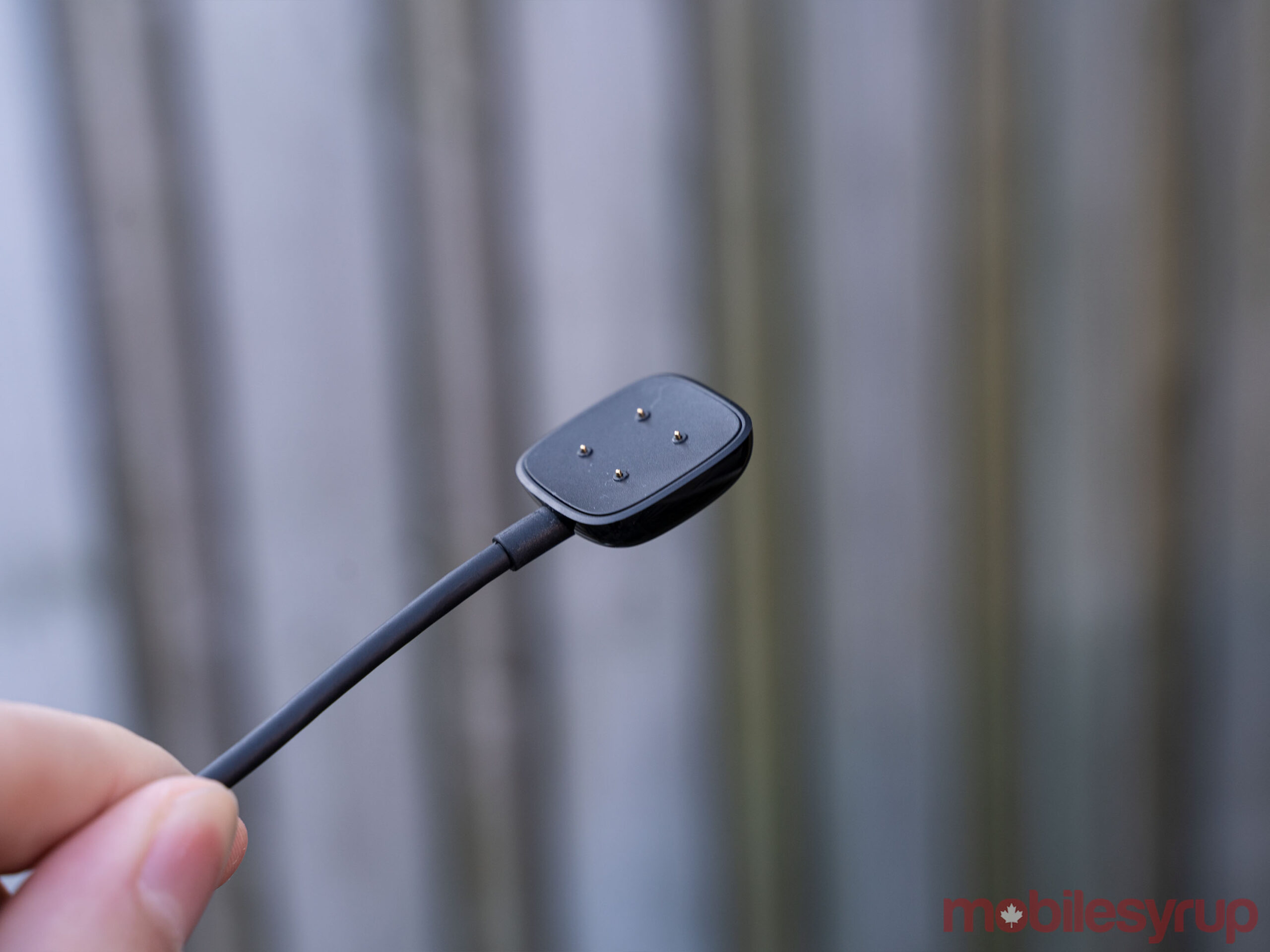
Speaking of charging, Fitbit introduced a new charging base with the Sense. While an improvement over the annoying plastic clip connector on older Fitbits, the new charger is not without issue.
The main problem is that the connector doesn’t clearly show which way to orient it when connecting to the Sense. Fitbit relies on magnets to guide you, but in practice I ended up fiddling around trying to line the watch and charger up right so they’d connect. A simple fix would be to add a small visual indicator so users can line them up the right way. Oh, and a cable longer than 55cm would be a massive improvement.
Don’t even stress
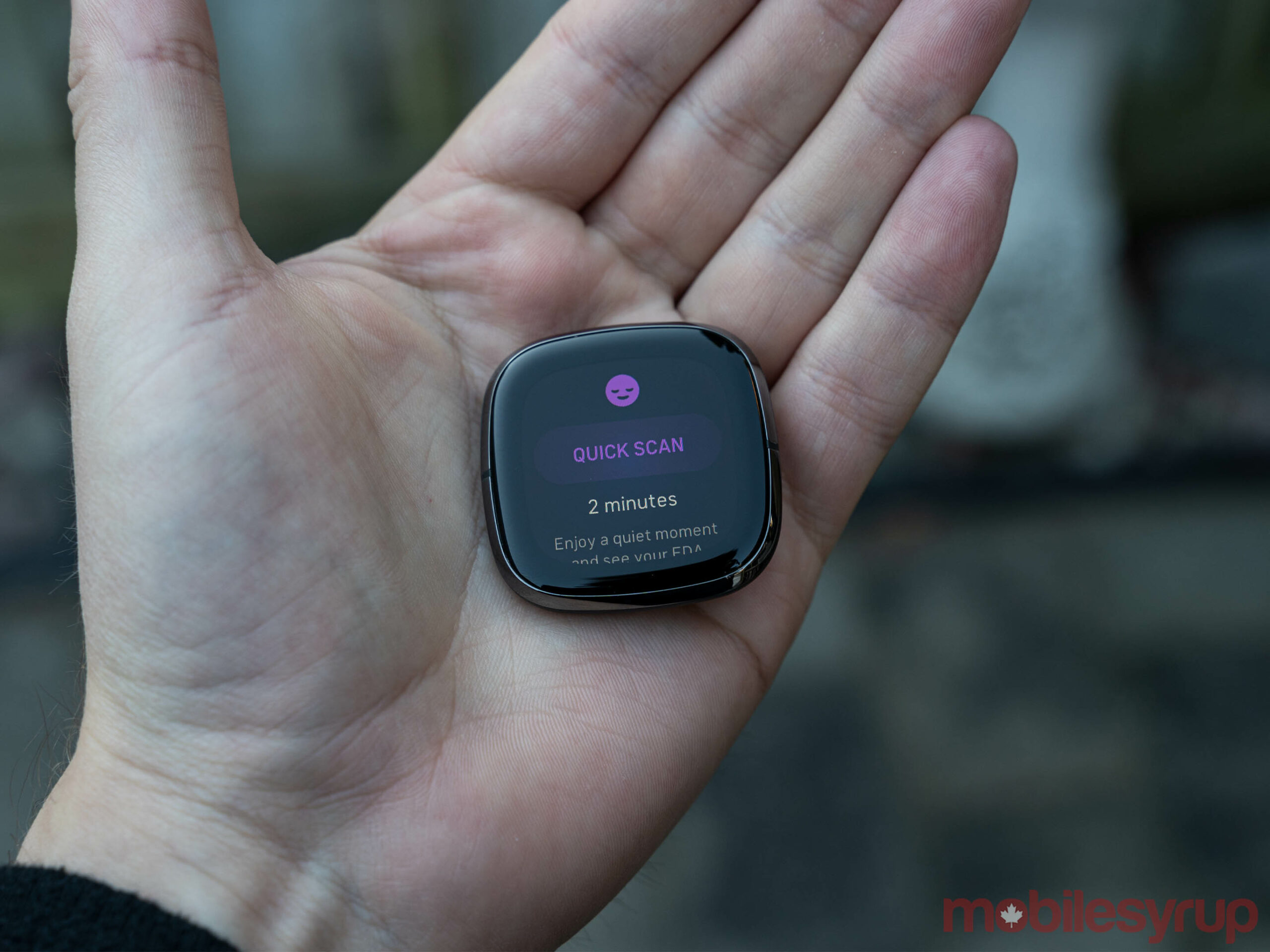
The big differentiating features of the Fitbit Sense almost exclusively revolve around stress management and mindfulness. If you’re a relatively stressed out person, it could be helpful. I’ve always considered myself laid back and relaxed, and the new Sense features only seem to confirm that.
First up, the new EDA Scan app measures electrodermal activity responses, which it describes as tiny changes in the sweat level of your skin. The EDA Scan app on the Sense notes that these changes may be because of stress or other factors like movement, noise or temperature change. And while EDA responses may differ from person to person, typically the lower the number of responses, the calmer you are.
For my part I rarely scored above 10 responses when testing the EDA Scan app’s ‘Quick Scan’ mode, which has users place their palm over the face of the Sense watch and relax for two minutes. It then gives you a measure of your EDA responses, asks you to log how you’re feeling and gives details about what it all means. EDA Scan also offers access to ‘Guided Sessions’ that can take up to 60 minutes. You’ll need to use your phone as well with these mindfulness sessions.

Completing the Quick Scan or Guided Sessions contribute towards your mindfulness goal in the Fitbit App — by default, it recommends five sessions per week.
Out of curiosity, I asked my fiancé, who is a much more anxious person than me, to try out the EDA Scan app with the Sense to see if it picked up more responses from her, but she fell within the same response range as I did each time she tried it.
All in all, the EDA Scan app is intriguing, but I think it has some flaws. For one, requiring me to cover the face of the watch with my hand is annoying, especially in a longer session. It doesn’t feel natural to me to sit with my hand on my wrist like that and when doing it while practising mindfulness, I found it distracting.
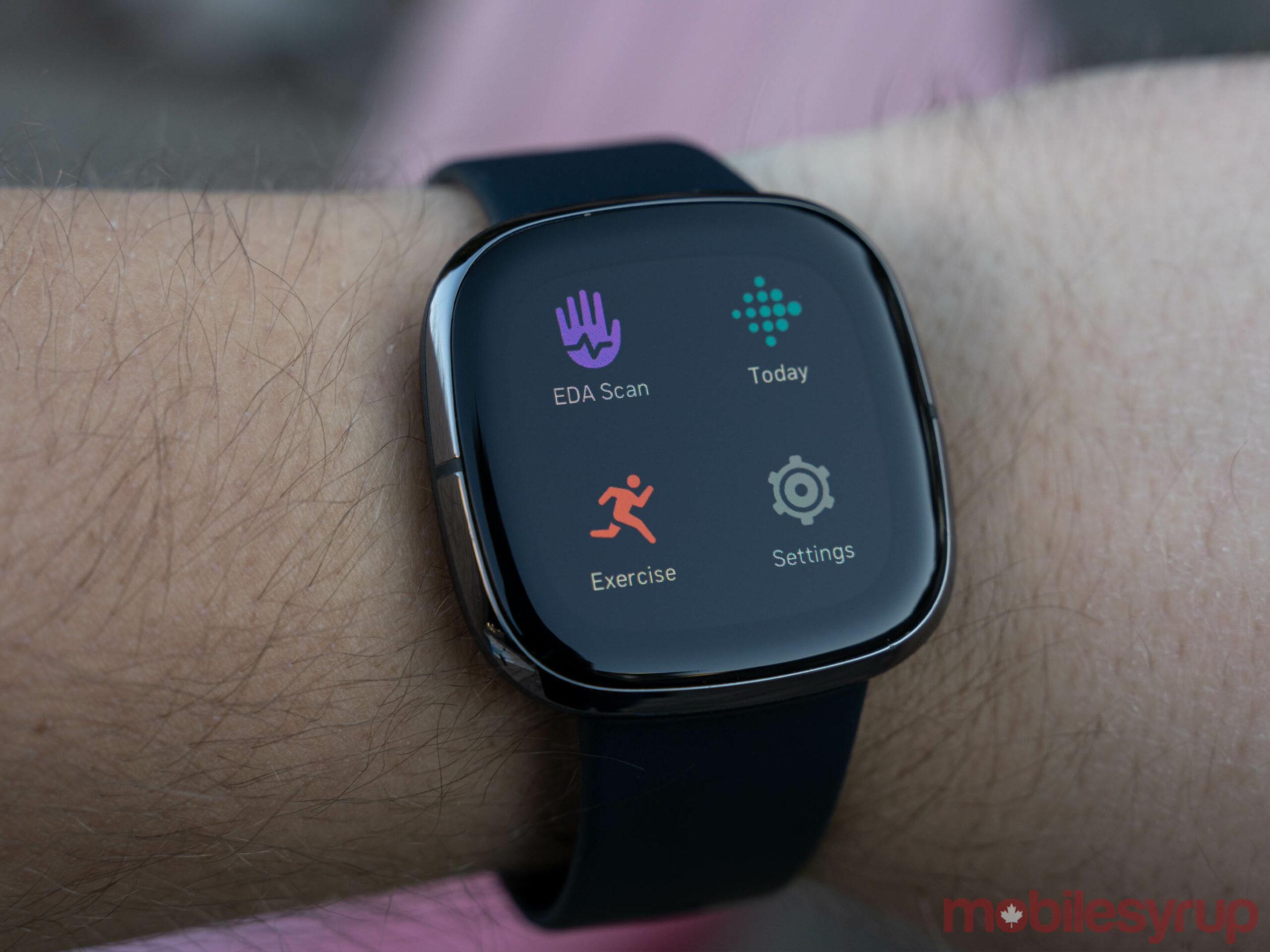
Further, I think it’d be interesting to have a passive version of EDA Scan that runs throughout the day. Something like that would be more helpful since it could notice when I get stressed and alert me to step away or take a few minutes to calm down. As is, when I’m generally able to take the time and do an EDA Scan, I’m in an environment where I’m already fairly relaxed.
For that matter, there is a ‘Stress Management Score’ available in the Fitbit smartphone app, which the company says helps people understand how things like heart rate, sleep and activity impact stress and overall health. It assigns a score between 0 and 100, with higher scores indicating the wearer’s body shows fewer physical signs of stress. Fitbit calculates the score based on the following things:
- ‘Responsiveness:’ How much strain your body is under based on heart rate, heart rate variability and EDA activity as gathered by EDA Scan.
- ‘Exertion Balance:’ Impact of your physical activity.
- ‘Sleep Patterns:’ How well you’ve been sleeping.
Plus, if you’re a Fitbit Premium subscriber, the app will show what is impacting your stress score based on those metrics.
Again, I think this metric will be helpful for some, but for me, it just confirmed that I wasn’t a particularly stressed person.
Other notable health features

Fitbit incorporated a few other health features into the Sense that are either new or improved from its other watches and trackers. SpO2 tracking, also known as blood oxygen level monitoring, makes a return — it uses an infrared sensor to estimate the oxygen saturation of the wearer’s blood. Specifically, the Sense tracks SpO2 at night while you sleep. Fitbit trackers have had this feature for a while, but other smartwatches, such as Apple’s Watch Series 6, have started to add it as well.
The company positions the feature as a useful tool for monitoring your breathing at night, as significant decreases in oxygen saturation could indicate trouble breathing. Of course, the feature shouldn’t be used in place of actual medical advice. Still, it could help shed some light on health problems someone might not be aware of.
The newest addition here is a new SpO2 watch face, which is also available on the Versa and Ionic lines.

Another new sleep feature is skin temperature variation. The Sense calculates a baseline skin temperature over three nights and then shows your average nightly temperature against the baseline in the Fitbit app. Premium subscribers will get access to deeper details about temperature variation and see when they were hotter or colder throughout the night.
Sense includes Fitbit’s improved ‘PurePulse 2.0’ tech for better heart rate monitoring, which includes warnings for high and low heart rate. Built-in GPS makes a return as well, which can help with tracking runs, bike rides and more. Those who use the always-on display option can see real-time pace and distance on the screen while they’re running.
Unfortunately, not all the new features will be available right away in Canada. The new ECG feature, for example, won’t be available in Canada at launch. Fitbit’s website indicated the company was waiting on regulatory clearance before the feature would make its way north of the border.
Wow, that’s a very smart watch
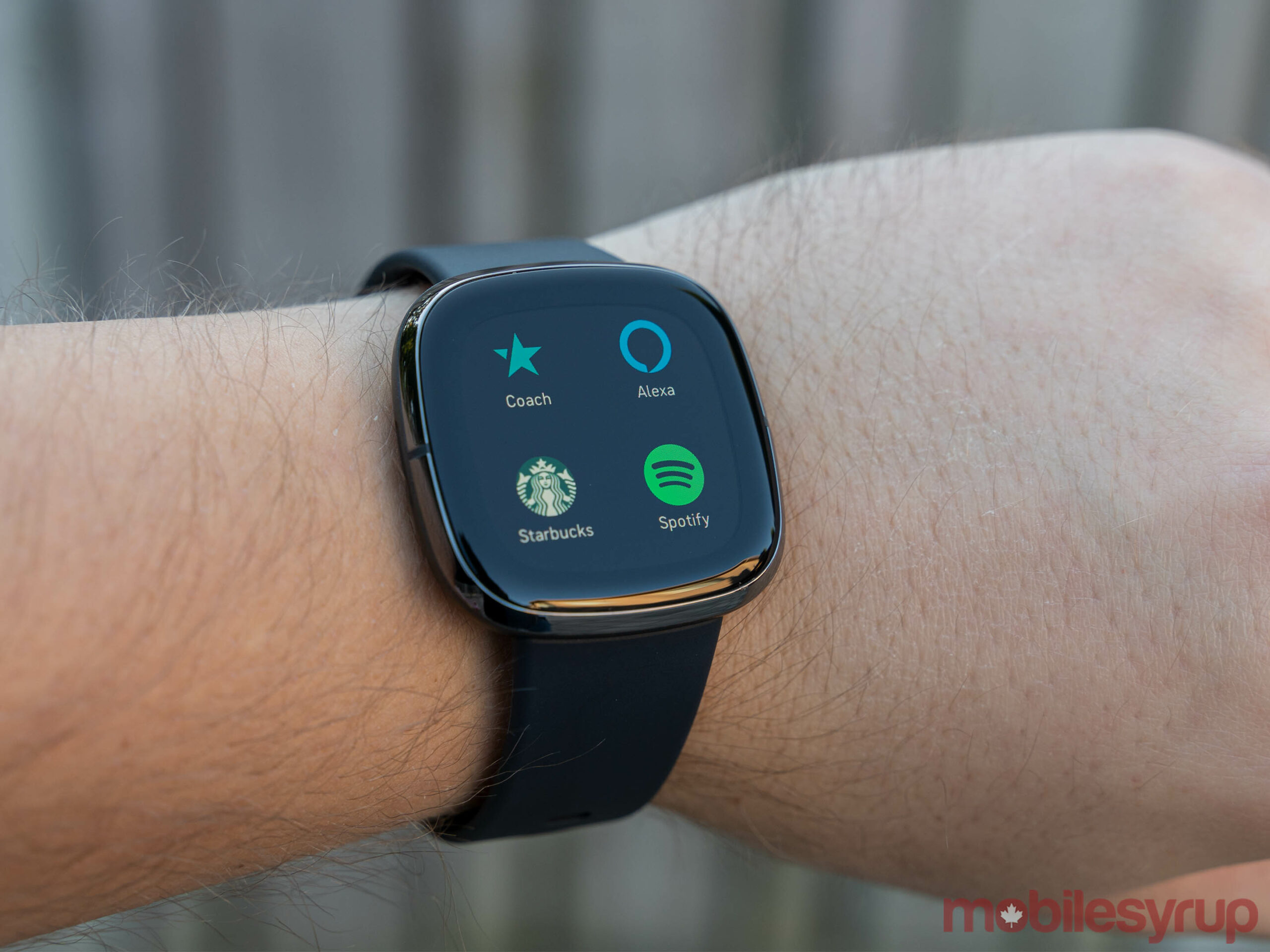
I typically avoid using features like notifications and apps on smartwatches, but I actually found notifications quite impressive on the Sense. I find it annoying when my phone vibrates, let alone a watch buzzing whenever I get a message. That said, the Fitbit Sense now offers voice-to-text replies for text messages and it works impressively well for short responses.
You can also take phone calls on your wrist, which again, is something I wouldn’t want to do but for those who would do use that feature, it works fine.
My one gripe is that Fitbit ties the Sense’s notification settings to your phone’s sound settings. I like to keep my phone on silent since I dislike vibrate and for some incredibly frustrating reason, Google decided if you set your Android phone to ring, it should still vibrate (yes you can change this in settings but you have to do it on an app-by-app basis and I do not have time for that). What this means is Fitbit sees my phone is set to silent and similarly sets Sense notifications to silent. This would be fine, since I also don’t want text messages to vibrate my wrist, except when in this mode the Sense won’t show incoming calls (the one thing I would like to have vibrate my wrist).

You can avoid this by turning on a setting in the app to always vibrate, which then overrides the silent mode, but it also means text messages will vibrate your wrist, so there’s no winning with this. Ideally, the Fitbit app would offer more fine-tuned controls over notifications beyond on or off (such as silent notifications or vibrating for important things like calls).
Like past Fitbit smartwatches, the Sense features Amazon Alexa support and coming later this year, Google Assistant will join the party. Plus, you can now access either assistant by long-pressing the side button.
Fitbit app doesn’t handle watch management well
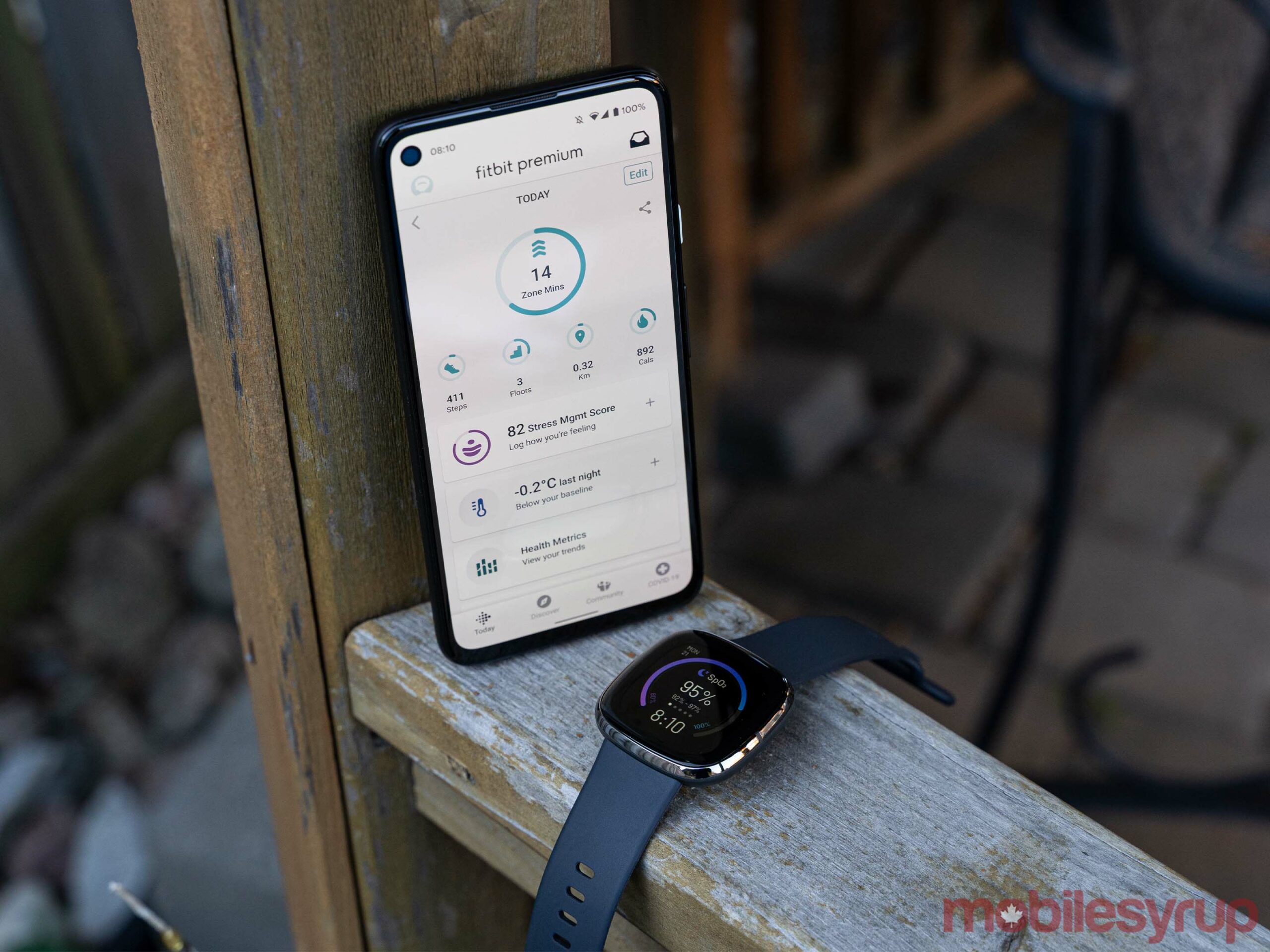
On the app side, watches just aren’t a great interface. Outside a few quick features, like starting an EDA Scan, I just couldn’t justify going to the Sense to do something when I could just grab my phone instead.
Still, in the interest of thoroughness, I spent some time with the apps and found them to be mostly underwhelming. Sure, I can connect to Spotify using the Sense and control music playback from my wrist but it’s rare that my wrist is more accessible than my phone. I recognize not everyone uses their smartwatch tech the same way, but I don’t see the appeal in using a less capable app on a tiny display.
Further, Fitbit’s smartphone app is an absolute travesty when it comes to managing on-watch capabilities. In my testing, I ran into multiple issues where the Fitbit app either failed to properly install apps and clock faces or froze up entirely. One instance ended with me needing to restart both my phone and the Fitbit Sense to get things working again. Once I had it all set up to my liking, I largely left the app alone outside of periodically checking my stats, and it was a much better experience.
To be fair, most of my testing involved using Fitbit’s Android app. Although I didn’t encounter any significant issues with Fitbit on iOS, I also didn’t spend a significant amount of time with Fitbit on iPhone.

Prior to testing the Fitbit Sense, I used a Withings tracker and its Health Mate app. Perhaps I’ve grown too accustomed to Withings’ excellent and minimal app, but the Fitbit app felt overcrowded and unreliable by comparison.
At the end of the day, the Fitbit app worked, but I think one area that the company can significantly improve the Sense — and also Versa, Charge and other devices — is by delivering a top-tier companion app.
How the Sense stacks up

Despite some issues with the smartphone app, I really didn’t have any significant problems with the Fitbit Sense. All in all, it was an incredibly capable and competent device chock-full of excellent tracking software, helpful smart features and more.
In Canada, the Fitbit Sense comes in at $429, which is $130 more than the Versa 3 and $100 less than the recently announced Apple Watch Series 6. While those interested in the Series 6 will need to wait for a full review from MobileSyrup managing editor Patrick O’Rourke, it’s worth noting that for the major health features, the Sense and Series 6 are pretty closely matched. There are a few differences, such as the Sense’s EDA Scan and Apple’s fall detection.
That said, the Series 6 will undoubtedly have an edge with iPhone users thanks to Apple’s deeply integrated ecosystem, and the Series 6 will also likely handle smart features like apps better. Plus, Fitbit’s watch faces don’t come close to Apple’s ‘complications’ system and customisable watch faces.
It’s also worth considering Apple’s new low-cost Watch SE ($369 in Canada), which lacks features like the SpO2 and ECG sensor, but has most of the other features available on the Sense.
Fitbit Sense is a great fitness-focused smart watch, especially on Android
With those two smartwatches in mind, I think the Sense matches up better with the Series 6, and likewise offers great value. This is doubly true for Android users, who can’t consider the Apple Watch a wearable option and, frankly, don’t really have any other good choice.
The only other comparison worth making is to the Versa 3, which is almost identical except for the stress tools, EDA Scan, skin temperature and high/low heart rate notifications. If those features aren’t crucial to you, the Versa 3 will do basically everything you need for $130 less. I'll have a full review of the Versa 3 in the coming weeks for those interested in learning more.
The Sense isn’t a perfect wearable, but it does fitness really well. In my opinion, Fitbit also nailed some of the other crucial smartwatch features. Software kinks aside, the Fitbit Sense is a great smartwatch at a solid price, especially for Android users. It faces stiff competition from the Apple Watch, but iPhone users who aren’t invested in Apple’s hardware ecosystem may also find the Sense a worthy wearable.
Currently, you can purchase the Sense on Fitbit's website, but it doesn't ship until September 25th. It costs $429.95 CAD.
Update 10/06/2020 at 11:16am: Updated the review with more detail about the Sense and its battery life after spending more time with it.
Software kinks aside, the Fitbit Sense is a great smartwatch at a solid price.
MobileSyrup may earn a commission from purchases made via our links, which helps fund the journalism we provide free on our website. These links do not influence our editorial content. Support us here.


